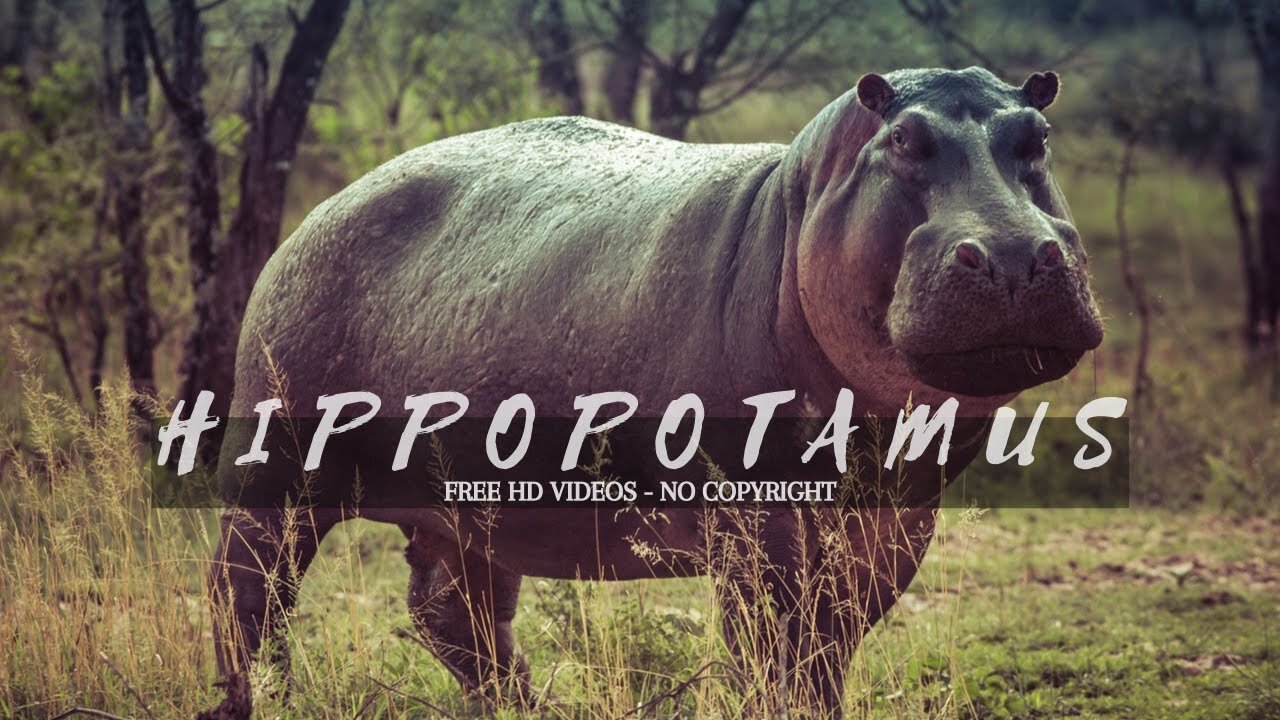Premium Only Content

Hippopotamus || Description, Characteristics and Facts!
Description:
The hippopotamus, or hippo for short, is a large, mostly herbivorous mammal found in sub-Saharan Africa. Known for its massive size, barrel-shaped body, and short legs, the hippo is a semi-aquatic animal, spending much of its time submerged in rivers, lakes, and swamps to keep its massive body cool under the hot African sun. Their skin is hairless and varies in color from slate gray to brown, with pinkish tones underneath. They possess unique adaptations such as eyes, ears, and nostrils located on the top of their head, allowing them to remain mostly submerged while still being able to see, hear, and breathe.
Characteristics:
Massive Size: Hippos are among the largest land mammals, with adult males weighing up to 3,200 kilograms (7,000 pounds) and females up to 2,500 kilograms (5,500 pounds).
Herbivorous Diet: Despite their intimidating appearance, hippos are primarily herbivores, feeding on grasses and aquatic plants. They are known to graze on land at night and during the twilight hours.
Territorial Behavior: Hippos are highly territorial and can be extremely aggressive, especially when defending their territory or offspring. They have large canine teeth and powerful jaws capable of inflicting serious injuries.
Social Animals: Although hippos are typically solitary when feeding, they are known to congregate in groups called pods or schools in water bodies, ranging from a few individuals to as many as 30.
Vocal Communication: Hippos communicate through a variety of vocalizations including grunts, honks, and bellows, which play a crucial role in establishing dominance and maintaining social bonds within the group.
Conservation Status: Despite being widely distributed across Africa, hippos face threats such as habitat loss, poaching for their ivory-like canine teeth, and conflicts with humans. As a result, they are classified as vulnerable by the International Union for Conservation of Nature (IUCN).
#Hippopotamus #Wildlife #Conservation #AfricanWildlife #SemiAquatic #Territorial #Herbivore #EndangeredSpecies #Nature #AnimalFacts
-

GritsGG
13 hours agoRumble Customs! 3515 Ws! 🫡!
78K -
 5:59:47
5:59:47
SpartakusLIVE
9 hours agoThe HUGEST Brain (not forehead) delivers Saturday SPARTOONS || Variety Later - Shadow of Mordor
181K4 -
 2:34:20
2:34:20
Barry Cunningham
9 hours agoPRESIDENT TRUMP WELCOMES FOOTBALL SEASON! AND MORE BREAKING NEWS!
72.6K46 -
 54:47
54:47
Side Scrollers Podcast
13 hours agoSide Scroller Presents KING OF THE KART | MASSIVE MARIO KART TOURNAMENT
41.7K -
 4:12:33
4:12:33
Mally_Mouse
13 hours ago🔥🍺Spicy HYDRATE Saturday!🍺🔥-- Let's Play: Baldur's Gate!
34.2K3 -
 2:26:32
2:26:32
BooniesHQ
8 hours agoGame Of SKATE Shaun Hover Vs. Jeff DeChesare: Boonies Skate Night 1
108K5 -

MissesMaam
4 hours agoAmong Us 3D (ft. Rumblers) 💚✨
11K1 -
 LIVE
LIVE
S0lidJ
4 hours ago🟢Live - S0lidj - Solo Snipes
55 watching -
 17:08
17:08
Exploring With Nug
1 day ago $2.74 earnedMassive Thunderstorm Hits During Search for Missing Georgia Woman!
27.5K1 -
![RCP #29🤟 [FR/ENG] 🤟 Satisfactory trying to grow a beautiful Factory, possible other Game later 🤟](https://1a-1791.com/video/fww1/98/s8/1/o/q/N/d/oqNdz.0kob-small-RCP-29-FRENG-Satisfactory-t.jpg) 8:05:52
8:05:52
Deaf Gamer Girl
10 hours agoRCP #29🤟 [FR/ENG] 🤟 Satisfactory trying to grow a beautiful Factory, possible other Game later 🤟
3.97K